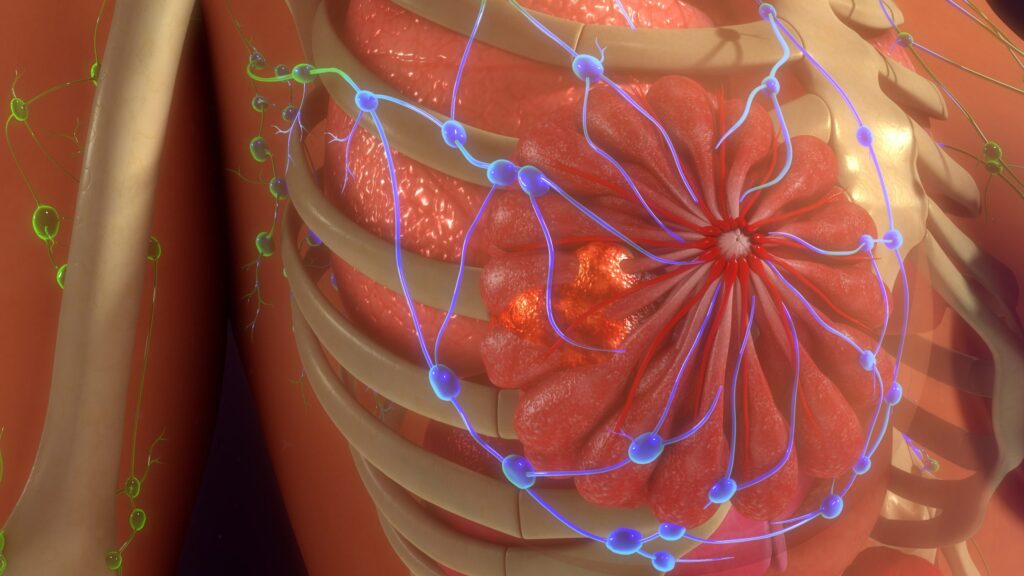With almost 20 already approved since 2000, including some blockbusters, antibody drug conjugates (ADCs) are clearly one of the biggest waves in cancer research. But even the older, less complicated, targeted therapies, including pioneer Herceptin that targets HER2, have had their challenges in the testing lab. Pathologists hunched over microscope slides sometimes had difficulty coming to the same conclusions. Now, experts are betting that AI-driven digital pathology can make the ADC revolution go more smoothly.
“We are at the tip of the iceberg with ADCs, and digital pathology opens new frontiers,” Jeff Allen, PhD, president and CEO of Friends of Cancer Research told Inside Precision Medicine. “Tumors can be targeted more efficiently and targets that were unrecognizable before will be able to be seen.” There is even the hope that multiple targets in a single tumor can be evaluated simultaneously.
Nonprofit Friends of Cancer Research is one of the groups aiming to accelerate this process. They have done pivotal work to support standardization of biomarker discovery and clinical application. The group sponsors and leads both the ai.RECIST Project on Artificial Intelligence-Based Measurement of Response Evaluation Criteria in Solid Tumors, and the Digital PATH Project on Digital and Computational Pathology Tool Harmonization.
The Digital PATH project is comparing the performance of 10 digital pathology tools for HER2 status evaluation from a common set of about 1,100 breast cancer samples. Results were presented this May, and a key finding was that there was a high level of agreement between digital pathology tools’ results and those of expert human pathologists—at least when the tumor marker was highly expressed. The greatest variability of results was seen at the non- and low (1+) levels of expression.
Each of the participating digital pathology tools use AI to recognize patterns on digitized slides and can be used to indicate the extent of expression of biomarkers like HER2.
Partners include: 4D Path, Amgen, AstraZeneca, Bristol Myers Squibb, EMD Serono, GSK, Kulig Consulting, Loxo@Lilly, Massachusetts General Hospital, MD Anderson Cancer Center, Merck, Neomorph, Paige.AI, PathAI, Sanofi, Tempus AI, the U.S. Food and Drug Administration (FDA), University Hospital of Antwerp, and University of North Carolina at Chapel Hill.
The AI-RECIST project aims to make similar progress in using RECIST for tumor evaluation. RECIST (Response Evaluation Criteria in Solid Tumors) is performed by radiologists to provide tumor measurements at defined timepoints and monitor course of treatment to quantify treatment efficacy.
The first approved ADC was gemtuzumab ozogamicin in 2000, a CD33 antibody conjugated to an antitumor antibiotic, calicheamicin. It was approved for acute myeloid leukemia. There are now almost 20 ADCs approved and around 100 in clinical trials.
The ADC global market is now estimated at approximately $10 billion. Enhertu leads the market with sales of $3.754 million. The drug is jointly developed and commercialized by Daiichi Sankyo/AstraZeneca and consists of a HER2 monoclonal antibody (trastuzumab) attached to a topoisomerase I inhibitor (DXd) payload, and an exatecan derivative (DX-8951 derivative, DXd).
While traditional targeted therapies home in on a particular molecular target, ADCs go a step further by carrying target tumors with a toxic payload that kills cancer cells while minimizing damage to healthy tissues. But developing and using ADCs requires more precise evaluation of tumor characteristics compared to traditional immunohistochemistry.
Digital pathology, especially when coupled with novel staining approaches, measures biomarker expression with higher accuracy than IHC alone. Researchers use AI and automation to identify a biomarker’s presence, as well as its quantity, to provide a clearer and more detailed assessment of an ADC’s efficacy.

